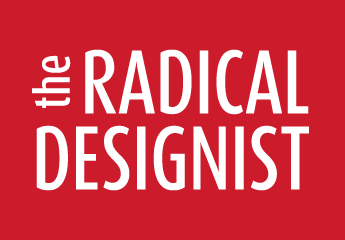“Here it is! ThRAD’s first issue.
ThRAD´s nº1 issue starts off with a long forgotten essay/paper written back in 1956, “The Idea of Modernity” by Adolfo Casais Monteiro, whom of which discourses about the end or collapse of Modernity. Casais Monteiro, a Portuguese poet and critic, was self-exiled in Brazil in order to live outside the suffocating blanket of Salazar’s dictatorship. He had prolifically written poetry and literature before WWII. At the end of the 1950’s, his conviction was/he was convinced that modernity had ended.
Long after the gap of despair caused by Hiroshima, a somewhat ridiculous concept of post-modernism arose in Budapest, almost erasing the previously emerging philosophical inquiries about the post-modern condition (in other words, the “post mortem” condition of modernity). Monteiro’s essay testifies the original concerns of theorists and critics as to what they thought to be a dying concept. There is not much hope in his thesis, but alas, it was written in 1956 and all ended up very differently to what Monteiro anticipated.
Following Monteiro, you may read a review of “Ethics? Design?” by Clive Dilnot’s Archeworks lecture, in number two of Volume 1 of “The Archeworks Papers” edited by Stanley Tigerman in 2005. Dilnot gives us his account of what are still the echoes of WWII and of its subsequently cruel developments. In a way, it is a response to Monteiro´s theory.
Luz del Carmen Vilschis Esquivel sends us back to the late 1960’s in Mexico where revolution and graphic arts walked together totally embedded to one another.
Zeynep Tuna Ultav gives us an essay that methodologically goes straight to the local editors´ hearts. Using literature and other arts as a reference for cultural understanding of Design is ThRAD´s crucial call/aim/goal. Tuna Ultav’s reading of Ballard’s “High Rise” places us again inside the frail thread of modern life in a post-modern condition.
With Carlos Duarte we have the confirmation/we have proof that “Kondratieff cycles” rule us all irrevocably. Monteiro and Dilnot speak from the bottom of the waves at the beginning of the rising part of the cycle. After the great catastrophes of 1945 and 2001, the “High Rise” stands, coincidentally, on the early seventies peak.
With a 50-year long career, Daciano da Costa intensely/intensively gave form to the Design Profession in Portugal during the second half of the twentieth century. Graduated in Fine Arts, he embraced all the areas of design as well as a whole generation of architecture and design students. Daciano was responsible for, among others, the interior designs of the Gulbenkian Foundation main Building, the National Library, the Belém Cultural Centre, the Rector’s Building at the University of Lisbon and the Casino Park Hotel in Madeira with Oscar Niemeyer. He called/referred to himself as a “Designer of Public Service”. João Paulo Martins, one of his assistants both in academics as in practice, gives us a good account of the master’s production. For the time being, this will only be available for Portuguese Language readers.
“Fluxus” is another example of a long-lasting `career´. Ken Friedman gives us an account of half a century of intermedia art production with an inside view of the twelve Fluxus ideas. These ideas are considered to be the twelve core concepts for contemporary design.
Continuing with our inquiries about Design occurrences, following the/in the lines of Shakespeare, we scrutinized Lemuel Gulliver’s account of some bizarre islands such as Liliput, Blefuscu, and Balnibarbi’s capital city Lagado, where the great academy of projectors is installed and where one should expect succulent clues about the use of the word. We wish not to surpass Swift’s irony by this selection. The reader must be the judge of this.
A final note: after ThRAD´s nº3 issue, a group of selected essays (elected/chosen by the international boards) will be published in the bilingual annual paper version: The “Radical” Designist Magazine. After ThRAD´s nº4 issue, we will subscribe to the on-line library platform SciELO where the papers/essays will be indexed.

